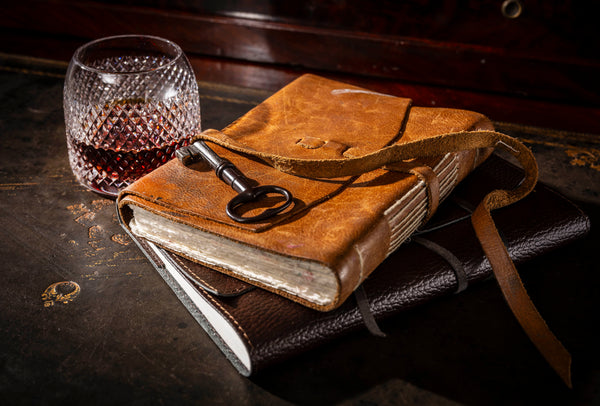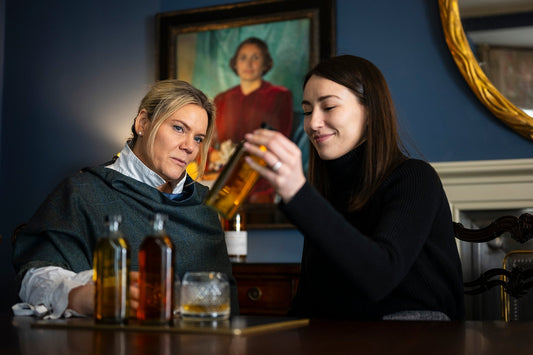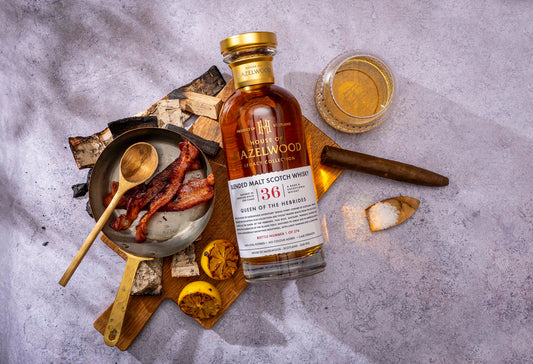As interest in rare Scotch whisky continues to grow with momentum around the world, so does the threat of counterfeit fake whisky. How can one stay safe in this rapidly evolving landscape?
With such a valuable offering, comes the risk of unscrupulous promises and offers that seem too good to be true. Can you be sure what you’re buying is truly the real deal? We share our tips to help you avoid fake whisky and stay safe when dealing with rare Scotch.
Fake Whisky – What’s the Harm?
Counterfeit whisky is a serious business. Earlier this year, The Spirits Business that fake wine, beer and spirits is estimated to cost the European Union a mighty €3 billion – fuelled both by mainstream releases, and significantly more lucrative, rare releases.
Asides from the obvious inferior quality that a fake whisky may present, the counterfeit market is far from a victimless crime. The first major concern is the threat to health – as counterfeit operations become more sophisticated thanks to the introduction of new technologies, bottles and decanters can be presented in an extremely convincing way. In the instance of some, the glass bottles themselves may even be direct replicas, filled with inferior liquid. Naturally, without being able to verify the source of origin, consumption of the liquid within could ultimately harm the drinker as the spirit within may not even be potable.
Beyond the immediate risk to health and wallet, the workings behind such an operation are oft rooted in other criminal activity, and even if a bottle is bought purely for the purpose of display, the revenue generated as a result of the sale of counterfeit goods, no matter how seemingly harmless, are almost always tracked to serious crime syndicates operating in the likes of human trafficking, drugs, illegal arms deals and terrorism – crimes with real tangible cost.
How to Spot a Fake Whisky
Rare and aged Scotch is almost always a considered purchase due to its rarity and subsequent value. The good news is even if you would not consider yourself as whisky expert, there are many easy-to-spot tell-tale signs on how to spot a fake whisky.

Buy From a Reputable Source
The safest and most secure way to ensure your bottle is authentic is to shop with reputable traders only, such as the whisky producers themselves. A reputable source should always have a good offline and online footprint, allowing you to verify history, company details and independent reviews through third party destinations, such as news articles or official business websites.
Of course, the bonus of purchasing directly through the producer, as opposed to an independent seller, is the ability to ask detailed questions around the bottle in question. When making a significant investment, such as in an expression from the House of Hazelwood, producers should be forthcoming and transparent on the history of the bottle. They should be able to provide enough reassuring detail of the whisky’s origins to enable you to feel secure in your purchase. Furthermore, buying direct from the producer also ensures your bottle is the first in the chain of ownership – meaning you can expect it to be in pristine condition – with the added benefit if anything is less than perfect, it can be resolved.

Interrogate the Bottle
With any significant purchase of whisky, time should be taken to examine the bottle in great detail. This is where you are most likely to find signs that a bottle is not the real deal or has been tampered with. Begin by examining the capsule – is the seal intact and the cork snug? If the threshold has been broken, then there is good chance that the spirit within could have been modified or replaced.
The level of whisky should be consistent within the bottle – is it as expected? Next, consult the spirit itself – older whiskies may be subject to some sediment, but if the whisky appears off-colour, or dirty in anyway, then steer clear or ask further questions. Chill haze may be present – but with such a sizeable purchase, presenting the entire bottle in this way would be considered unacceptable.
It is important to also check the general condition of the bottle – be careful with accepting flaws such as chips or broken corks as the integrity of the bottle could be fundamentally flawed, or in a worse-case scenario, undrinkable.
Finally, check the label carefully. Are there signs that a label has been restickered? Look for glue residue, imprints, and other signs that the label has been replaced. Bottles of whisky should reference the original producer, as well as a bottle code which could be used to verify the batch and origins of the whisky with the creator.

Verify Authenticity and Provenance
As the adage goes “if it is too good to be true, it is” can be applied in the world of whisky. If an extremely rare and aged bottle is suspiciously affordable, the chances are it is not authentic. Ensure that you can accurately trace back the origins of the bottle – how did it come to be? What is its maturation and production history? Who previously kept it?
Consider conducting your own independent research or seeking the advice of a third party to verify claims. Any reputable seller or producer should have no issues answering your questions with confidence – and in fact, with a sizeable purchase, questions of this nature would be expected as the norm. Remember, if you cannot confirm your questions, it could be a costly mistake.
Fake Whisky – Staying Safe
Staying safe in an increasingly risky world of fake whisky can be daunting, but never forget that producers are actively fighting against the counterfeit trade with measures such as tamper-proof seals and beyond to help ensure the products that make their way into your hands are legitimate.
If you are considering the purchase of a House of Hazelwood rare whisky, our expert Whisky Concierge team are on hand to assist – simply send them a message.




